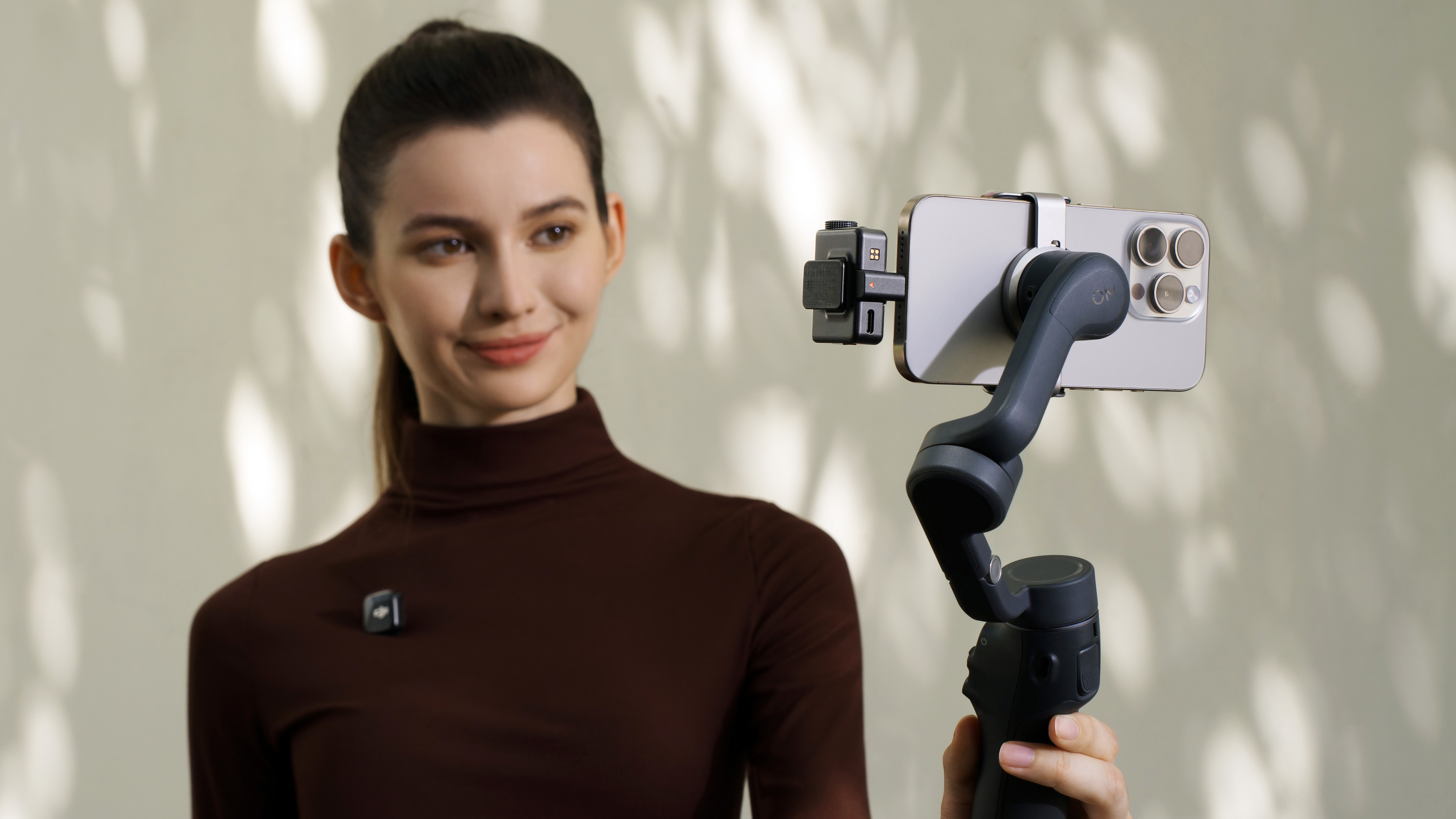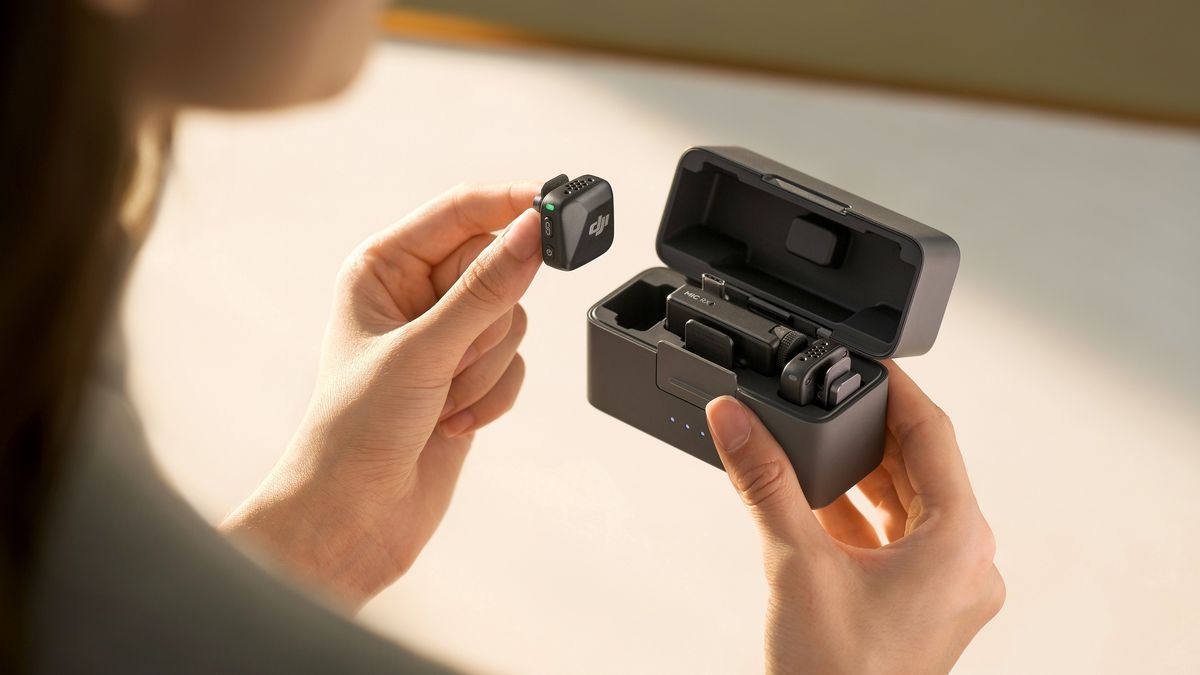DJI has unveiled its tiniest wireless mic, the Mic Mini, which weighs just 0.35oz / 10g and pairs easily with smartphones and cameras for better quality audio on-the-fly.
Rivaling the recently announced Rode Wireless Micro, which is just for smartphones, DJI has taken a different approach in creating a Bluetooth mic that’ll work with cameras too, even if its receiver is chunkier (see the picture below showing it attached to a smartphone).
The mics, also known as transmitters, attach easily using a clip or magnetic mount, and are like a shrunk-down version of DJI’s Mic 2, which we crowned the best camera accessory in the TechRadar Choice Awards 2024.
@techradar
♬ Storytelling – Adriel
DJI sells the components individually and also as kits, with the transmitters (mics) available in Infinity Black or Arctic White. One transmitter costs $59 / £49 / AU$69, a transmitter with receiver costs $89 / £79 / $AU125, and a kit which includes two transmitters, a receiver and a charging case, costs $169 / £145 / AU$245. The complete kit is probably your best bet if you’re starting from scratch.
The receiver includes a USB-C connector, but if you’re using an iPhone with Lightning port you’ll need to purchase the adapter separately ($19 / £19 / AU$39). The list price for the kit is similar to the Rode Wireless Micro despite the Mic Mini’s greater versatility, while it’s around half the price of DJI’s Mic 2.
DJI Mic Mini vs DJI Mic 2: which is right for you?
Both the Mic Mini and Mic 2 work with smartphones and cameras. They connect to your phone via Bluetooth, or to a phone or camera via a wireless receiver which connects directly through USB-C.
Where DJI’s wireless mics differ is that the pricier Mic 2 features 32-bit float audio that can more ably avoid clipping when your audio suddenly gets loud, and internal storage for direct recording so you can use it independently of a camera or as a backup, while its receiver features a display to monitor audio levels.
The Mic Mini is a much simpler device, with its receiver offering ±12db audio level control, but otherwise it’s a simple experience and, crucially, a reliable mic system. We’ve already been testing the Mic Mini for several weeks, and we’ll publish our review very soon. Spoiler alert: DJI has knocked it out of the park again with a slick, glitch-free, and well-built mic.

So which model is best for you? I’d recommend the Mic Mini to those who need a simple experience and mostly use their phone for creating content. It’s half the price, and twice as simple to use.
The Mic 2 on the other hand offers seriously powerful audio features, and would hands-down be the better option for serious creators who care about audio quality. Both are excellent options for use with the best mirrorless cameras, and will make a perfect pairing with the DJI Osmo Pocket 3, a top-rated vlogging camera.
It’s a tougher call between the Rode Wireless Micro and Mic Mini. If you’re only creating video with a smartphone, then Rode’s offering makes more sense, because its receiver is much smaller and fits snuggly into your USB-C charging port, whereas the Mic Mini’s receiver sticks out and can get in the way. However, you don’t have the option to use the Rode Wireless Micro with a camera should you ever step up.

